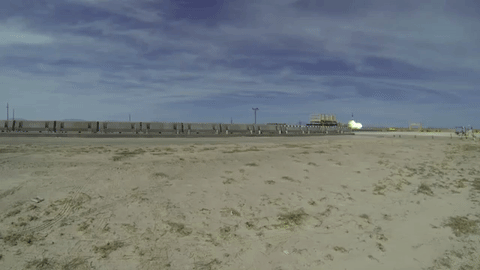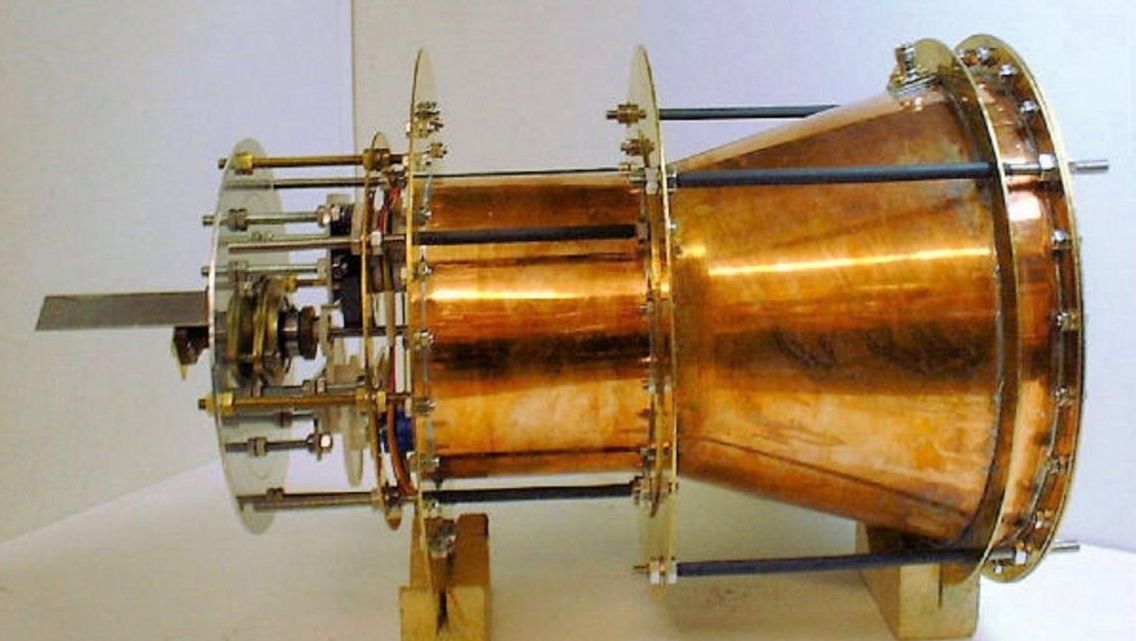Page 11603
Apr 20, 2016
The US Air Force just broke the world speed record for magnetic levitation
Posted by Sean Brazell in category: futurism
The US Air Force’s 846th Test Squadron is on a bit of a roll when it comes to breaking world speed records. A couple of years ago, the unit set the speed record for magnetic levitation at 510 mph. Then earlier this year on March 2nd, the squad broke the record again at Holloman’s Air Force Base in New Mexico, sending a 2,000 pound, magnetically levitated, rocket-powered sled down a nearly frictionless track at 513 mph. But that record only stood for two days, when the 846th set a new one at an incredible 633 mph.
Apr 20, 2016
This microscope uses artificial intelligence to detect cancer cells
Posted by Karen Hurst in categories: biotech/medical, robotics/AI
Bots are only as good as their under pinning legacy infrastructure/ networks. Glad to see this article and someone speaking again for investors outside SV.
Bots hit the mark on every pattern Silicon Valley loves. But for investors and entrepreneurs — and executives outside of San Francisco trying to figure out what this bot business is all about — it’s worth taking a step back and looking at this frenzy with fresh eyes and a bigger picture.
Simple interactions between people — making a connection, following and messaging — when captured in a digital network of people who know each other already personally, professionally or by reputation, have created a handful of extremely valuable networks where three billion people today spend the majority of their time.
Apr 20, 2016
What Does it Mean to “Move to the Cloud”? This eBook Breaks Down the Myths
Posted by Karen Hurst in categories: bitcoin, computing, employment, finance, internet, neuroscience, robotics/AI
Again; many problems with AI & IoT all ties back to the infrastructure of things. Focus on fast tracking QC and an interim solution (pre-QC) such as a mix of Nvidia’s GPU, blockchain for financial transactions, etc. to improve the infrastructure and Net then investors will begin to pay more attention to AI, etc.
After more than 60 years since its conceptual inception — and after too many hype-generating moments — AI is yet again making its presence felt in mainstream media.
Following a recent WEF report, many perceive AI as a threat to our jobs, while others even go so far to assert that it poses a real threat to humanity itself.
Continue reading “What Does it Mean to ‘Move to the Cloud’? This eBook Breaks Down the Myths” »
Apr 20, 2016
Technology Becomes Us: The Age of Human-Computer Interaction
Posted by Karen Hurst in categories: biotech/medical, computing, singularity
We’re not there yet. First step will be BMIs which last week’s announcement of the 1st successful human BMI enabling a paralyzed man to use his hands again. Once we perfect BMI plus bio computing as well as other nano technologies we can then say we’re in the age of real HCI and Singularity.
Apr 20, 2016
The Curious Link Between the Fly-By Anomaly and the “Impossible” EmDrive Thruster
Posted by Andreas Matt in category: futurism
The same theory that explains the puzzling fly-by anomalies could also explain how the controversial EmDrive produces thrust.
Apr 20, 2016
Bioquark Inc. and Revita Life Sciences Receive IRB Approval for First-In-Human Brain Death Study
Posted by Ira S. Pastor in categories: aging, bioengineering, biological, biotech/medical, cryonics, disruptive technology, futurism, health, life extension, neuroscience
Bioquark, Inc., (http://www.bioquark.com) a company focused on the development of novel biologics for complex regeneration and disease reversion, and Revita Life Sciences, (http://revitalife.co.in) a biotechnology company focused on translational therapeutic applications of autologous stem cells, have announced that they have received IRB approval for a study focusing on a novel combinatorial approach to clinical intervention in the state of brain death in humans.
This first trial, within the portfolio of Bioquark’s Reanima Project (http://www.reanima.tech) is entitled “Non-randomized, Open-labeled, Interventional, Single Group, Proof of Concept Study With Multi-modality Approach in Cases of Brain Death Due to Traumatic Brain Injury Having Diffuse Axonal Injury” (https://clinicaltrials.gov/ct2/show/NCT02742857?term=bioquark&rank=1), will enroll an initial 20 subjects, and be conducted at Anupam Hospital in Rudrapur, Uttarakhand India.
Tags: aging, anti-aging, biological, biotech, biotechnology, brain death, cryonics, Death, evolution of brain, future, God, humanity, Immortal Life, immortality, Life extension, longevity, Neural Stem Cells, Neurology, neuropharmacology, Neuroregeneration, Neuroscience, posthumanism, Radical Life Extension, reanimation, rejuvenation, Religion, research, resurrection, singularity, technology, transhumanism
Apr 20, 2016
Our Sun May Have Eaten A Super Earth For Breakfast
Posted by Sean Brazell in category: space

That’s fine with me…
As long as it doesn’t plan on having us for desert. (not until it turns red, gets fat, and burns our planet alive, at least)
Continue reading “Our Sun May Have Eaten A Super Earth For Breakfast” »
Apr 20, 2016
Team builds first quantum cascade laser on silicon
Posted by Karen Hurst in categories: computing, quantum physics
Very nice; Silicon based Quantum Laser has been achieved. Imagine what this does for ISPs and other communications. smile
A team of researchers from across the country, led by Alexander Spott, University of California, Santa Barbara, USA, have built the first quantum cascade laser on silicon. The advance may have applications that span from chemical bond spectroscopy and gas sensing, to astronomy and free-space communications.
Integrating lasers directly on silicon chips is challenging, but it is much more efficient and compact than coupling external laser light to the chips. The indirect bandgap of silicon makes it difficult to build a laser out of silicon, but diode lasers can be built with III-V materials such as InP or GaAs. By directly bonding an III-V layer on top of the silicon wafer and then using the III-V layers to generate gain for the laser, this same group has integrated a multiple quantum well laser on silicon that operates at 2 µm. Limitations in diode lasers prevent going to longer wavelengths where there are many more applications, so the group turned their attention to using quantum cascade lasers instead.
Continue reading “Team builds first quantum cascade laser on silicon” »
















